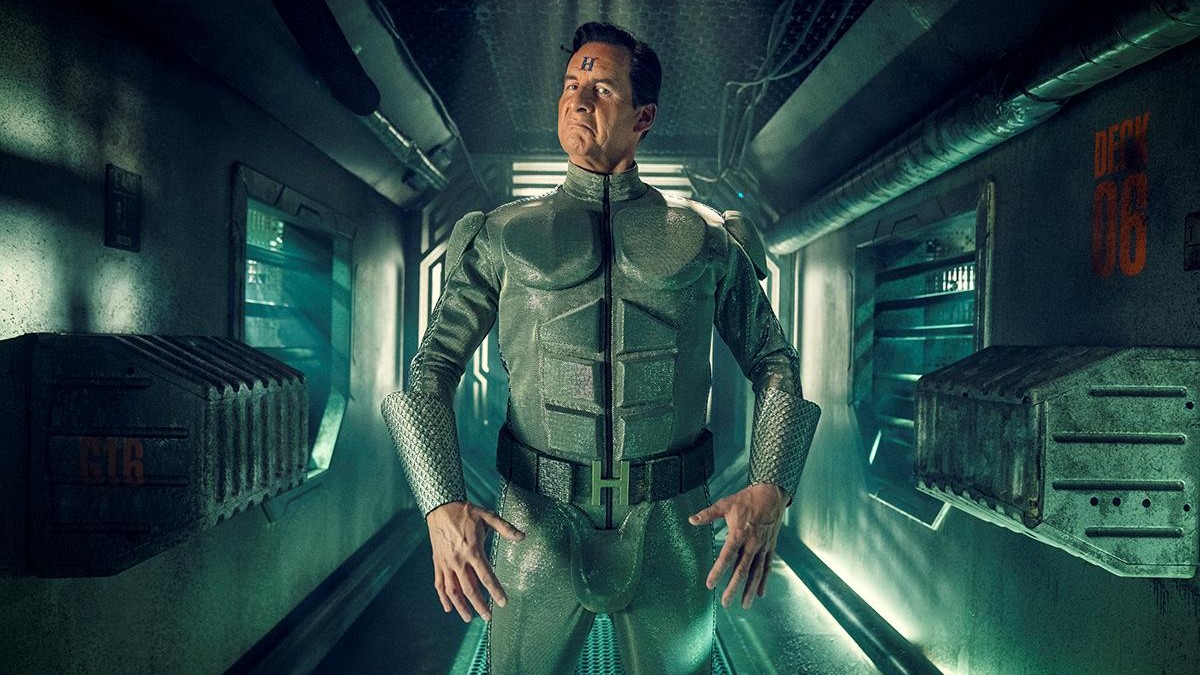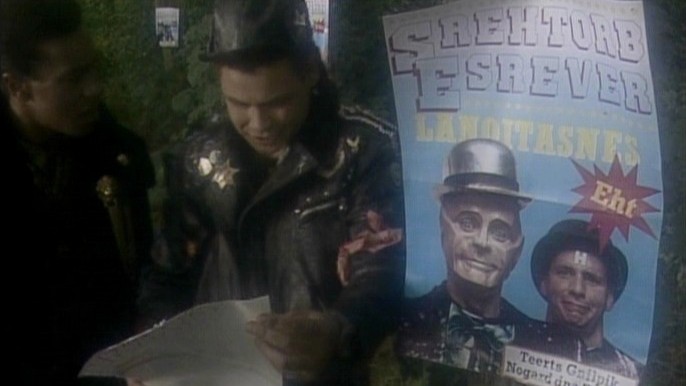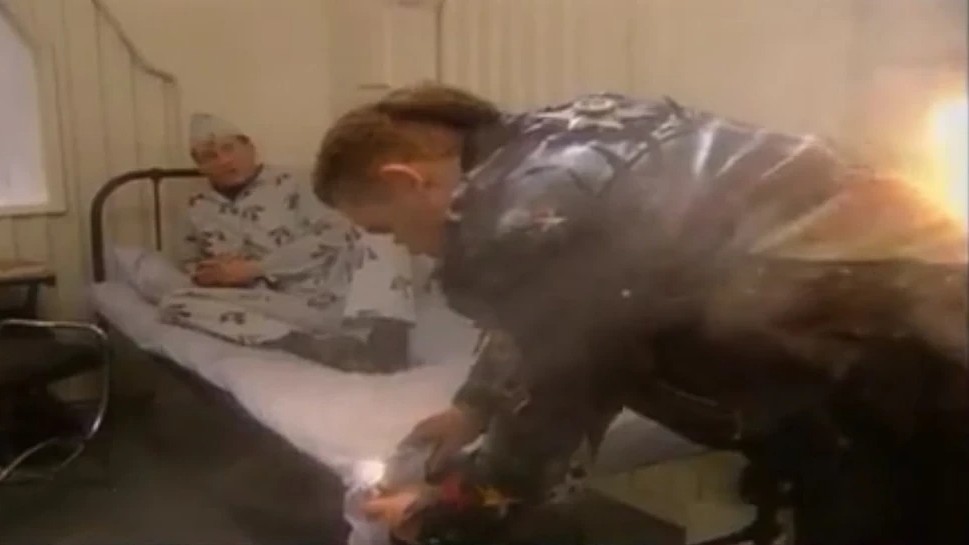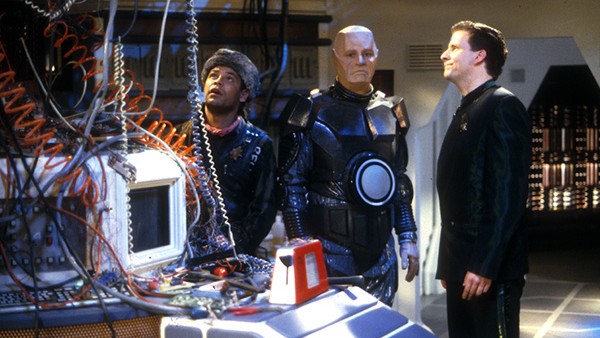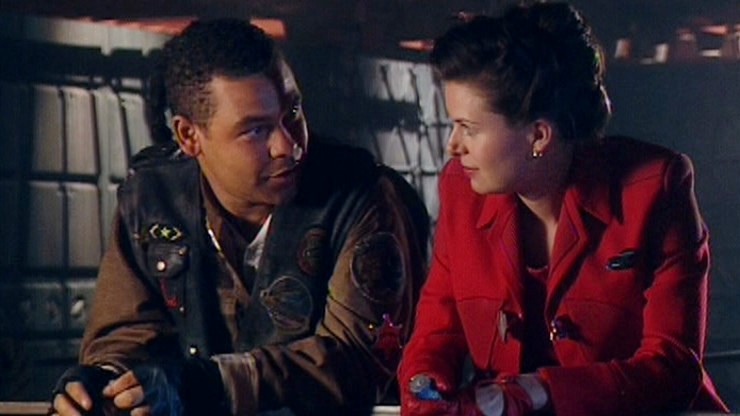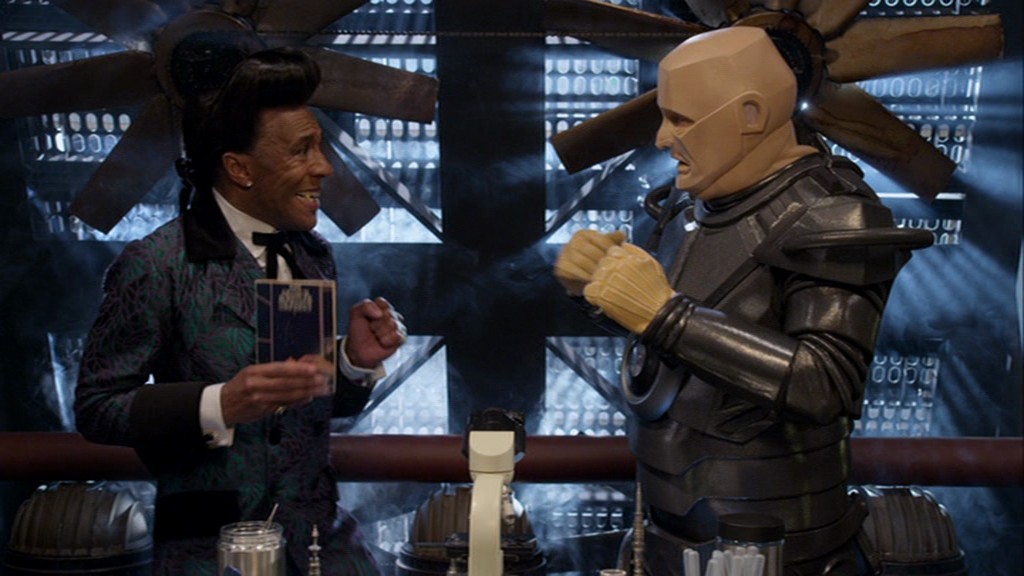Red Dwarf: 10 ways the Brit sci-fi sitcom proved it was as smart as Star Trek
It may be engineered for gags, but the 35-year-old show has never shied away from sophisticated sci-fi ideas.

Focused on a quartet of mismatched characters forced to live together by circumstance, "Red Dwarf" is a situation comedy in its purest form. The thing that sets it apart is that said situation is somewhere in the middle of deep space, three million years in the future on a dilapidated, city-sized spaceship Red Dwarf, arguably one of the coolest spaceships in sci-fi.
For all the gags and unashamed silliness, however, the show has been built on solid science fiction foundations since it first materialized on the BBC in 1988. With "Doctor Who" on hiatus between 1989 and 2005, "Red Dwarf" became the highest profile sci-fi show on British T.V., and writers/creators Rob Grant and Doug Naylor frequently came up with concepts every bit as smart as those encountered by Jean-Luc Picard and co in "Star Trek: The Next Generation." That instinct for pushing the limits of the final frontier has continued since Grant departed the show following 1993's series VI.
Below we've pulled together 10 of the most sophisticated – and unconventional – sci-fi ideas from "Red Dwarf"'s epic 35-year history. And, it's worth noting that they've done it all without any alien visitations...
However, if you want to get your fill of creatures from outer space, then check out the best sci-fi movies and best T.V. shows of all time – you won't be disappointed!
1. Holograms and hard light
It's a bold move to bump off one of your lead characters in your debut episode, but the show had the ideal way back for Red Dwarf second technician Arnold Judas Rimmer. After his shoddy repair work caused the deaths of all his crewmates, he was resurrected as a hologram to keep Dave Lister, the last human in the universe, company – seven years before "Star Trek" introduced a holographic crew member (the Doctor) of its own in "Voyager."
In early seasons, Rimmer was unable to interact with solid objects, but the introduction of a "hard light" emitter in "Red Dwarf VI" episode "Legion" gave him physical form, emulating the solid light found in "Star Trek"'s holodecks, and making life a lot easier for actor Chris Barrie. Rimmer got another upgrade in 2020's feature-length "The Promised Land," thanks to a "diamond light" drive that briefly turned him into a superhero. This was a superlative evolution with one minor flaw – his battery life was shockingly bad.
2. Three million years of evolution
"Red Dwarf" may have steadfastly avoided close encounters with aliens over its 35-year run, however, that doesn't mean it hasn't created new species. When Lister awoke from his three-million-year stay in stasis in the first-ever episode "The End" – punishment for his refusal to surrender his pet cat, Frankenstein, to the authorities – he was introduced to a shallow, vain humanoid evolved from that very same feline.
Breaking space news, the latest updates on rocket launches, skywatching events and more!
We subsequently learned that, in the many millennia since "Cloister the Stupid" was frozen in time, those Felis sapiens had developed their own society, fought holy wars, and subsequently abandoned Red Dwarf to find the promised land of "Fuchal" (aka Fiji). Cat was one of those left behind, though the boys from the Dwarf did run into more of the species in "The Promised Land."
3. Artificial lifeforms
Another way "Red Dwarf" has deftly sidestepped its "no aliens" rule is by packing the universe with numerous types of artificial beings. Many of these are genetically engineered life forms (usually referred to as "GELF"s in the show) and have ranged from standard sci-fi humanoids to monsters that feed on emotions (polymorphs) and shapeshifters (the pleasure GELF "Camille," the Psiren of "Psirens").
The crew have also encountered several cyborg Simulants (usually notable for their passionate dislike for humans) and a giant genetically-engineered "despair squid," whose ink could induce mass hallucinations ("Back to Reality"). Perhaps the most intriguing lifeform, however, was Legion, a "gestalt entity" with the ability to combine any mind in close proximity into a being with an intellect greater than the sum of its parts – who else could have created the wonder of anti-matter chopsticks?
4. Virtual reality
Where "Star Trek: The Next Generation" generally used the holodeck to get away from it all, "Red Dwarf" has traditionally preferred virtual reality. Decades before metaverses became fashionable, the show was strapping the gang into artificial reality headsets, some of which looked more like bicycle helmets than anything like the cutting edge tech of the best VR headsets we have today.
From the game-gone-wrong of "Better than Life" to "Gunmen of the Apocalypse"'s Western-themed assault on a computer virus, the show has frequently explored the comedic potential of transporting yourself to another world. Best of the bunch, however, was "Back to Reality," in which the aforementioned despair squid caused the crew to hallucinate that they'd spent the last four years playing a total immersion videogame called "Red Dwarf." It's the most emotionally powerful episode in the show's history – and no, Cat does not want to be Duane Dibbley.
5. The backwards universe
On one level, a world where time runs in reverse is simply an excuse for gags that would be impossible in any other sitcom – it's best not to think too hard about what going to the toilet would involve. Nonetheless, "Red Dwarf III"'s "Backwards" was also based on the ingenious sci-fi premise of an anti-universe, as Rimmer, Lister, the Cat, and service mechanoid Kryten (by this point a regular member of the crew) landed on a planet where time's arrow had been flipped. Christopher Nolan's "Tenet" riffed on similar ideas in 2020, though it was nowhere near as funny.
6. The Justice Field
Science fiction loves finding cruel and unusual ways to incarcerate the worst of the worst, from "Superman: The Movie"'s two-dimensional Phantom Zone to "Escape from New York"'s abandoned Manhattan. But, few prisons are as ingenious as the facility in "Red Dwarf IV"'s "Justice," where committing any crime is impossible thanks to the site's in-built Justice Field.
Any criminal act you perform will instantly be inflicted back on you – in other words, when Lister tried setting some bed sheets alight, his own jacket quickly caught on fire. Luckily for the Dwarfers, they were able to turn the prison's unique security measures to their advantage, when they goaded the ruthless simulant on their tail into blasting himself to smithereens.
7. The white hole
Based on the idea that every action has an equal and opposite reaction (and, as it turns out, there’s actually some real-life science behind the theory), the white hole the posse encountered in season IV regurgitated the time and matter sucked out of the universe by its more famous cousin, the black hole. In the "Red Dwarf" universe, the concept was inevitably used as an excuse for some timey-wimey comedy – "What is it?" "I've never seen one before – no one has – but I'm guessing it's a white hole." And repeat…
However, there were undoubted parallels with the anomaly that spewed anti-time into the universe in "The Next Generation" finale "All Good Things" (which debuted three years later). Indeed, it remains a shame that Jean-Luc Picard didn't follow Lister's lead, playing pool with planets to permanently seal the fissure. Trick shot!
8. The luck virus
What if a winning streak really was infectious? Series V episode "Quarantine" made the silly but ingenious suggestion that luck was a tangible property (see also "Deadpool 2"'s Domino) that could be passed on in the form of a "positive" virus engineered by scientists.
Yes, it was incredibly convenient when Lister used a literal dose of good fortune to enter the correct door code to escape quarantine, and when he found all of the correct components to defeat a Rimmer driven insane by a nasty holo virus (alongside Mr. Flibble, his evil penguin hand puppet) . Even so, deus ex machina has rarely been so funny, or felt so justified in terms of the plot.
9. Lister’s parentage
If you thought "Back to the Future" (one of the best time travel movies of all time) had cornered the market on time travel-induced Oedipal complexes, you've never seen "Red Dwarf." In series VII's "Ouroboros" we learned why Lister had been left in a box under a pool table as a baby – and that he was actually his own dad. To make matters even more confusing, it also turned out that Kristine Kochanski – the woman Lister has been infatuated with since the show began – was his mother, and that he was the one who'd left his younger self in that Liverpool pub.
The whole scheme was part of Lister's destiny to form an unbreakable circle in time – the ouroboros symbol represents a snake eating its own tail – to ensure the human race never became extinct. It was also the reason why Lister subsequently sent himself a Father’s Day card every year ("Fathers and Suns").
10. Quantum entanglement
Many of "Red Dwarf"'s most memorable sci-fi moments have come when the scripts have riffed on ideas born in real-life science and spun them out in bizarre new directions – usually in the name of getting a laugh.
Series X's "Entangled" paid homage to one of the more esoteric concepts in contemporary physics, when a "quantum rod" from the S.S. Trojan's drive system caused Kryten and the Cat to experience quantum entanglement on a macroscopic scale – and, in a beautifully choreographed sequence, they ended up mirroring their actions in perfect unison.
Writer Doug Naylor's interpretation of quantum theory probably wouldn't stand up to much scientific scrutiny, but, let's face it, you could frequently say the same of "Star Trek".
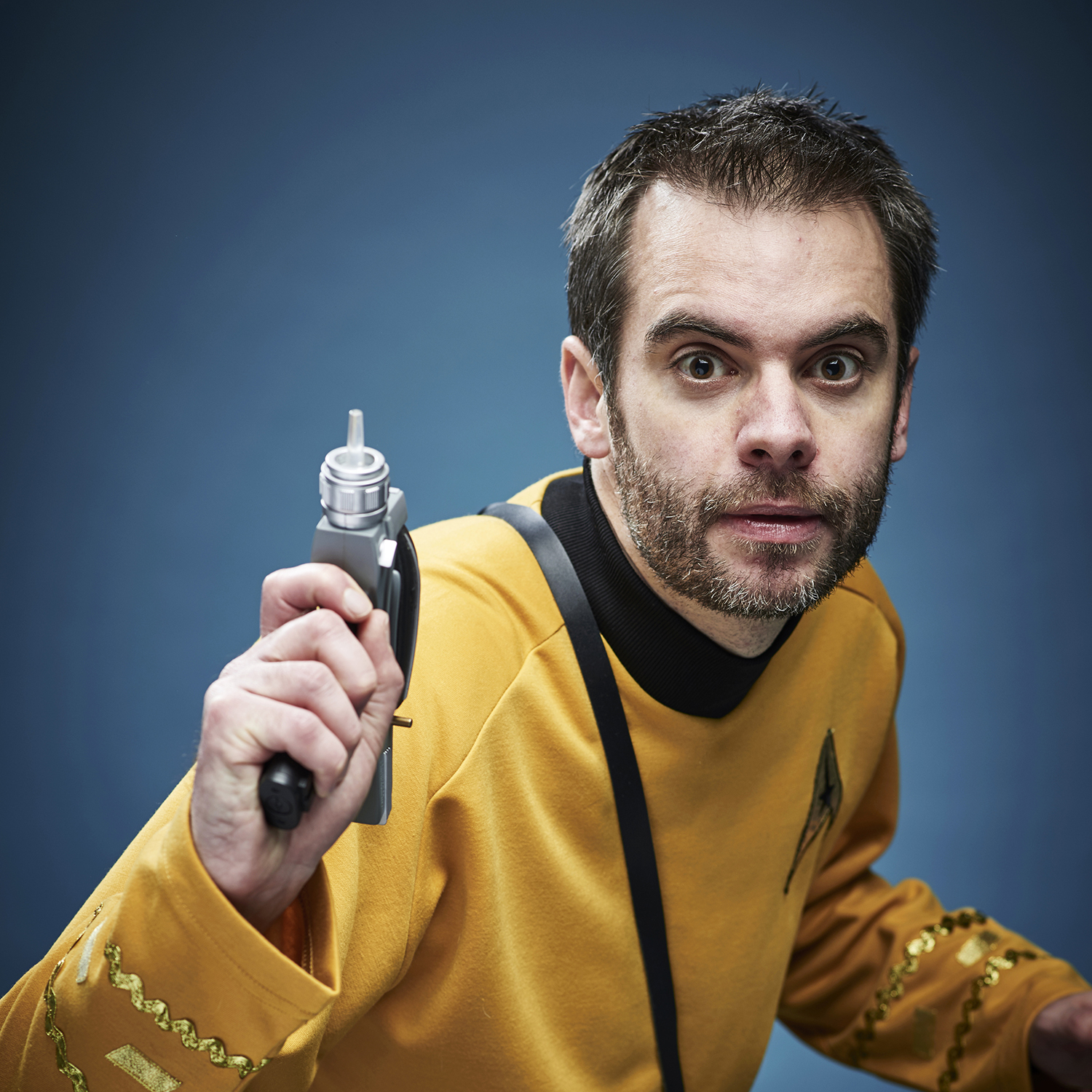
Richard's love affair with outer space started when he saw the original "Star Wars" on TV aged four, and he spent much of the ’90s watching "Star Trek”, "Babylon 5” and “The X-Files" with his mum. After studying physics at university, he became a journalist, swapped science fact for science fiction, and hit the jackpot when he joined the team at SFX, the UK's biggest sci-fi and fantasy magazine. He liked it so much he stayed there for 12 years, four of them as editor.
He's since gone freelance and passes his time writing about "Star Wars", "Star Trek" and superheroes for the likes of SFX, Total Film, TechRadar and GamesRadar+. He has met five Doctors, two Starfleet captains and one Luke Skywalker, and once sat in the cockpit of "Red Dwarf"'s Starbug.
